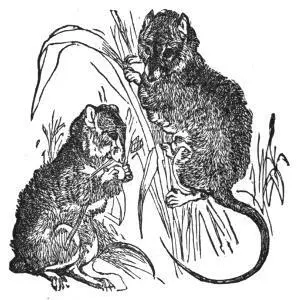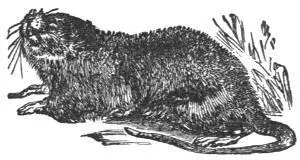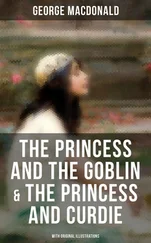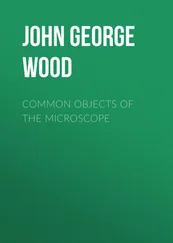John George Wood - The Common Objects of the Country
Здесь есть возможность читать онлайн «John George Wood - The Common Objects of the Country» — ознакомительный отрывок электронной книги совершенно бесплатно, а после прочтения отрывка купить полную версию. В некоторых случаях можно слушать аудио, скачать через торрент в формате fb2 и присутствует краткое содержание. Жанр: foreign_prose, foreign_antique, на английском языке. Описание произведения, (предисловие) а так же отзывы посетителей доступны на портале библиотеки ЛибКат.
- Название:The Common Objects of the Country
- Автор:
- Жанр:
- Год:неизвестен
- ISBN:нет данных
- Рейтинг книги:4 / 5. Голосов: 1
-
Избранное:Добавить в избранное
- Отзывы:
-
Ваша оценка:
- 80
- 1
- 2
- 3
- 4
- 5
The Common Objects of the Country: краткое содержание, описание и аннотация
Предлагаем к чтению аннотацию, описание, краткое содержание или предисловие (зависит от того, что написал сам автор книги «The Common Objects of the Country»). Если вы не нашли необходимую информацию о книге — напишите в комментариях, мы постараемся отыскать её.
The Common Objects of the Country — читать онлайн ознакомительный отрывок
Ниже представлен текст книги, разбитый по страницам. Система сохранения места последней прочитанной страницы, позволяет с удобством читать онлайн бесплатно книгу «The Common Objects of the Country», без необходимости каждый раз заново искать на чём Вы остановились. Поставьте закладку, и сможете в любой момент перейти на страницу, на которой закончили чтение.
Интервал:
Закладка:
When first I made a personal acquaintance with these creatures, it was under rather peculiar circumstances. There is a certain field, which was given up to football, cricket, hockey, and similar games, as soon as the grass was converted into hay and removed. One day I was very tired with running, and lay down to rest on a pile of coats that had been laid aside; my eyes were fixed on one spot of earth, just visible between the grass stalks, but without any particular object. Presently I thought I saw a something red glide across the spot, but was not certain. However, I leaned over the place and a little farther on saw the same thing again. So I made a sharp pounce at the object, and found that I had caught a short-tailed field-mouse.
Now here was this impertinent little animal taking a walk close to the wicket, in spite of the bats, ball, and runners. In order to watch its proceedings, I released it, and followed it in its progress. After watching for a few minutes, I happened to look up for a moment; and when I again looked for the creature, it was gone, and I could not find it again.
Subsequently I became sufficiently expert to find them whenever I wished; and if I wanted a field-mouse, seldom had to examine more than a square yard of ground without finding one.
They are very injurious little creatures, for they are not content with eating corn, but nibble the young shoots of various plants, and sometimes strip young trees of their bark.
Fortunately we have allies in air and on earth, in the persons of owls and kestrels, stoats and weasels, or the damage done by these red-skinned marauders would be more than serious.
Some idea of the damage that may be done by the aggregate numbers of these small quadrupeds may be formed from the fact that in Dean Forest and the New Forest great numbers of holly plants were entirely destroyed by them, they having eaten off the bark for a distance of several inches from the ground. And other trees were favoured with the notice of the field-mouse, but in a different mode. Great numbers of oak and chestnuts were found dead, and pulled up; and when pulled up, it was seen that their roots had been gnawed through, about two inches below the level of the ground.
Various modes of destroying the marauders were put in practice, such as traps, poison, &c., but the most effectual was, as effectual things generally are, the most simple.
A great number of holes were dug in the ground, about two feet long, eighteen inches wide, and eighteen inches deep. This is the measurement at the bottom of the hole; but at the top the hole was only eighteen inches long and nine wide, so that when mice fell into it, they were unable to escape.
In these holes upwards of forty thousand mice were taken in less than three months, irrespective of those that were removed from the holes by the stoats, weasels, crows, magpies, owls, and other creatures.
Like most of the mouse family, the field-mouse is easily tamed; and I have seen one that would come to the side of its cage, and take a grain of com from its owner’s fingers.

HARVEST-MOUSE.
There is another kind of mouse which may be found in the autumn, together with its most curious nest. This is the Harvest-mouse, the tiniest of British quadrupeds, two harvest-mice being hardly equal in weight to a halfpenny.
The chief point of interest in this little creature is its nest, which is not unfrequently found by mowers and haymakers when they choose to exert their eyes.
One of these nests, that was brought to me by a mower, was about the size of a cricket ball, and almost as spherical. It was composed of dried grass-stems, interwoven with each other in a manner equally ingenious and perplexing. It was hollow, without even a vestige of an entrance; and the substance was so thin that every object would be visible through the walls. How it was made to retain its spherical form, and how the mice were to find ingress and egress, I could not even imagine. The nest was fastened to two strong and coarse stems of grass that had grown near a ditch, and had overgrown themselves in consequence of a superabundance of nourishment.

WATER-RAT.
If we walk along the bank of a stream or a pond, we shall probably hear a splash, and looking in its direction, may see a creature diving or swimming, which creature we call a Water-rat; to the title of Rat, however, it has but little right, and ought properly to be called the “Water-vole”.
On examining the banks we shall find the entrance to its domicile, being a hole in the earth, just above the water, and generally, where possible, made just under a root or a large stone. Sometimes the hole is made at some height above the water, and then it often happens that the kingfisher takes possession, and there makes its home. Whether it ejects the rat or not I cannot say, but I should think that it is quite capable of doing so. Many a time I have seen the entrance to a rat-hole decorated with a few stray fish-bones, which the rustics told me were the relics of fish brought there and eaten by the water-rat. But I soon found out that fish-bones were a sign of kingfishers, and not of rats; and so guided, found plenty of the beautiful eggs of this beautiful bird. Excepting the eggs of swallows and martins, I hardly know any so delicately beautiful as those of the kingfisher, with their slight rose tint and semi-transparent shell. But, alas! when the interior of the egg is removed, the pearly pinkiness vanishes, and the shell becomes of a pure white, very pretty, but not containing a tithe of its former beauty.
The piscatorial propensities of the kingfisher are not the only cause of the slanderous reports concerning the water-vole, and its crime of killing and eating fish. The common house-rat often frequents the water-side; and, it being a great flesh-eater, certainly does catch and eat the fish.
But the water-rat is a vegetable feeder, and I believe almost, if not entirely, a vegetarian in diet. That it is so in individual cases, at all events, I can personally testify, having seen the creature engaged in eating.
In former days, when I thought the water-rats ate fish, I waged war against them, for which warfare there are great facilities at Oxford. However, a circumstance occurred which showed me that I had been wrong.
I saw a water-rat sitting on a kind of raft that had formed from a bundle of reeds which had been cut and were floating down the river. Seeing it busily at work feeding, I took it for granted that it was eating a captured fish, and shot it accordingly, stretching it dead on its reed raft.
On rowing up to the spot, I was rather surprised to find that there was no fish there; and on examining the reeds, I rather wondered at the regular grooves cut by my shot. But a closer inspection revealed a very different state of things; namely, that the poor dead rat was quite innocent of fish eating, and had been gnawing the green bark from the reeds, the grooves being the marks left by its teeth. After this I gave up rat shooting on principle.
Once, though, a rather curious circumstance occurred.
In my possession was a pet pistol, which would throw a ball with great accuracy, and I considered myself sure of an apple at sixteen paces. One day, just as I was standing by a branch of the river Cherwell, I saw a water-rat sitting on the root of a tree at the opposite side of the river, and watching me closely. The river was not above twelve or fourteen yards wide; and the rat presented so good a mark that I fired at him, and, of course, expected to see him on his back.
Читать дальшеИнтервал:
Закладка:
Похожие книги на «The Common Objects of the Country»
Представляем Вашему вниманию похожие книги на «The Common Objects of the Country» списком для выбора. Мы отобрали схожую по названию и смыслу литературу в надежде предоставить читателям больше вариантов отыскать новые, интересные, ещё непрочитанные произведения.
Обсуждение, отзывы о книге «The Common Objects of the Country» и просто собственные мнения читателей. Оставьте ваши комментарии, напишите, что Вы думаете о произведении, его смысле или главных героях. Укажите что конкретно понравилось, а что нет, и почему Вы так считаете.












